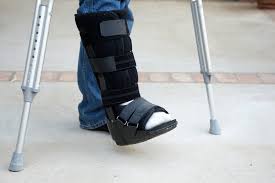As a practitioner, I see people seeking assistance with pain on a very regular basis. I would like to share one person’s experience with you. Jane*, a mother of two, recently experienced two incidents which showed her how debilitating pain can be.

A sprained ankle which also included a fractured ‘ankle bone’ (lateral malleolus) and partially torn ligament saw Jane hobbling on crutches and then in a moon boot for over six weeks. After this, the ankle required bracing during the day for several more weeks. Impatient to be getting on with things, Jane’s very understanding GP informed her that ankles take a long time to heal. Understandable, given the need to walk. Inflammation, swelling and ongoing pain became her daily norm.
It was not until Jane sought the care of an Osteopath/Cranio-Sacral specialist that the trauma and resulting imbalances to her entire body structure were adequately addressed resulting in a rapid healing of the ankle.
Unfortunately, Jane had another fall, landing full force on the floor. 24 hours in hospital on intensive pain relief was enough to show her that unless you have a major fracture or physically visible injury, there’s not a lot that staff can do for their patients. Sent home barely able to move, Jane began the healing process herself.

Rather than taking the strong (addictive opioid) medications prescribed, Jane focused on providing her body with natural anti-inflammatory supplements and alkalising foods. Progress was slow until another visit to the Cranio-Sacral Osteopath who told Jane that her spine and pelvic region (hips) had rotated due to the impact. Interestingly, the hospital doctors who assessed Jane’s X-rays did not mention this, only commenting that there was “no apparent fracture”.
Regular Osteopathic treatments helped to gently realign Jane’s entire body following both traumas. Other forms of support that helped were massage and N.O.T. (a type of kinesiology/chiropractic/neurological treatment).
Comments
What I find interesting and frustrating is that our main area of public health care does not offer any post-discharge support advice. Without the above complementary therapies, I have no doubt that Jane would still be experiencing ongoing pain. Not only pain, but possibly/probably the development of chronic damage due to unresolved structural imbalances.
Pain can be debilitating, especially when it is chronic. Rather than rely on ‘pain killers’ seek professional guidance to address the causes – structural, neurological or biochemical. If your doctors can’t provide this information, perhaps True Medicine can recommend a recovery plan.
* Name changed due to confidentiality but information published with the patient’s consent.
